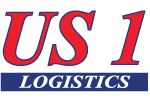The transportation industry is undergoing a significant transformation, driven by advancements in technology and a growing demand for efficiency. Among the most revolutionary developments is the advent of autonomous trucks. These vehicles, capable of navigating roads and highways with minimal human intervention, promise to reshape the landscape of freight transport. However, as with any technological advancement, the rise of autonomous trucks raises important questions about the future of truck drivers, the backbone of the transportation industry. In this article, we will explore the future of autonomous trucks, their potential impact on the industry, and what this means for truck drivers.
Covered Calls – You are doing it WRONG!
Trade Covered calls in the stock market the right way.
Make more money with less risk.
CLICK HERE – to find out more.
1. The Rise of Autonomous Trucks
Autonomous vehicles, particularly trucks, have been in development for several years, driven by advancements in artificial intelligence (AI), machine learning, and sensor technology. Companies like Tesla, Waymo, and Daimler have been at the forefront of this innovation, developing trucks that can operate with varying levels of autonomy.
1.1. Levels of Autonomy
Autonomous vehicles are categorized into six levels, from Level 0 (no automation) to Level 5 (full automation). Most of the trucks currently being tested or deployed operate at Level 2 or 3, where the vehicle can control steering, acceleration, and braking, but a human driver is still required to oversee the operation and take control when necessary.
Level 4 trucks, which can operate autonomously in certain conditions without human intervention, are on the horizon. However, Level 5 trucks, which would eliminate the need for a human driver altogether, are still years away from widespread deployment.
1.2. Current Developments and Trials
Several companies have made significant strides in testing and deploying autonomous trucks. For example, Waymo has been testing its autonomous trucking technology on public roads in Arizona and Texas, while Tesla’s Semi, an electric truck with semi-autonomous capabilities, is set to revolutionize the industry with its impressive range and performance.
Daimler’s Freightliner Cascadia, equipped with Level 2 autonomy, is already on the market, offering features like adaptive cruise control, lane-keeping assistance, and collision mitigation. These developments indicate that the future of autonomous trucking is not a distant dream but an imminent reality.
2. Potential Benefits of Autonomous Trucks
The rise of autonomous trucks promises several benefits for the transportation industry, including increased efficiency, reduced costs, and improved safety.
2.1. Increased Efficiency and Reduced Costs
Autonomous trucks have the potential to operate 24/7 without the need for rest breaks, significantly increasing the efficiency of freight transport. This could reduce delivery times and lower operational costs, benefiting both trucking companies and consumers.
Moreover, autonomous trucks could optimize fuel consumption through more consistent driving patterns, reducing the industry’s carbon footprint and contributing to sustainability efforts.
2.2. Improved Safety
One of the most significant potential benefits of autonomous trucks is improved safety. Human error is a leading cause of accidents in the trucking industry, often resulting from fatigue, distraction, or poor decision-making. Autonomous trucks, equipped with advanced sensors and AI, can react more quickly to changing road conditions, maintaining a safe distance from other vehicles and avoiding collisions.
The potential to reduce accidents could save lives and reduce the costs associated with accidents, including vehicle repairs, insurance premiums, and legal liabilities.
2.3. Addressing the Driver Shortage
The trucking industry has been grappling with a significant driver shortage for years, driven by an aging workforce, high turnover rates, and the demanding nature of the job. Autonomous trucks could help alleviate this shortage by reducing the reliance on human drivers, particularly for long-haul routes that are less appealing to many drivers.
3. Challenges and Concerns
While the benefits of autonomous trucks are compelling, their widespread adoption is not without challenges and concerns. These include technological limitations, regulatory hurdles, and the potential impact on truck drivers.
3.1. Technological Limitations
Despite significant advancements, autonomous trucking technology is still in its infancy. Challenges such as navigating complex urban environments, handling adverse weather conditions, and ensuring cybersecurity remain significant barriers to full automation.
Moreover, the AI systems that power autonomous trucks require massive amounts of data to learn and improve. This data must be accurate, diverse, and continuously updated to ensure safe and reliable operation.
3.2. Regulatory Hurdles
The deployment of autonomous trucks is subject to a complex web of regulations at the federal, state, and local levels. In the United States, for example, the Department of Transportation (DOT) and the National Highway Traffic Safety Administration (NHTSA) have yet to establish comprehensive regulations for autonomous vehicles.
Regulatory uncertainty could slow the adoption of autonomous trucks, as companies may be hesitant to invest in technology that could face future legal challenges. Additionally, differences in regulations across states could complicate interstate trucking operations, creating logistical and legal headaches for companies.
3.3. Cybersecurity Risks
As autonomous trucks rely heavily on software and connectivity, they are vulnerable to cybersecurity threats. A successful cyberattack could have catastrophic consequences, potentially causing accidents, disrupting supply chains, or even being used as a weapon in a terrorist attack.
Ensuring the cybersecurity of autonomous trucks is critical to their safe deployment. This requires robust encryption, regular software updates, and comprehensive security protocols to protect against hacking and other malicious activities.
3.4. Impact on Employment
Perhaps the most significant concern surrounding autonomous trucks is their potential impact on employment in the trucking industry. Truck driving is one of the most common occupations in many countries, providing millions of jobs. The widespread adoption of autonomous trucks could lead to significant job displacement, with potentially devastating consequences for workers and their families.
4. The Future Role of Truck Drivers
While autonomous trucks have the potential to disrupt the trucking industry, the role of truck drivers is unlikely to disappear entirely in the near future. Instead, the nature of the job is expected to evolve, with new opportunities and challenges emerging.
4.1. The Shift to Supervised Autonomy
In the coming years, it is likely that autonomous trucks will operate under a model of supervised autonomy, where human drivers remain responsible for overseeing the vehicle’s operation and intervening when necessary. This could involve monitoring the truck remotely or riding in the cab as a safety operator.
This model would require drivers to develop new skills, including the ability to monitor and manage autonomous systems, troubleshoot technical issues, and make critical decisions in complex situations.
4.2. The Rise of Technicians and Specialists
As autonomous trucks become more prevalent, there will be a growing demand for technicians and specialists who can maintain, repair, and upgrade these vehicles. This could create new job opportunities for truck drivers willing to undergo training and transition into these roles.
Additionally, the deployment of autonomous trucks will require a robust support infrastructure, including data centers, communication networks, and logistics hubs. This could create jobs in fields such as IT, cybersecurity, and logistics management, providing new career paths for displaced workers.
4.3. The Human Element in Complex Scenarios
While autonomous trucks excel in predictable environments, they may struggle in complex, unpredictable scenarios, such as navigating urban areas, handling emergency situations, or interacting with law enforcement. In these cases, human judgment and decision-making will remain essential.
Truck drivers will continue to play a crucial role in managing these scenarios, ensuring that freight is delivered safely and efficiently. This could involve working in tandem with autonomous systems, leveraging their strengths while providing the human touch when needed.
4.4. Opportunities for Upskilling
The transition to autonomous trucks presents an opportunity for truck drivers to upskill and adapt to the changing industry. Training programs in AI, robotics, and data analysis could equip drivers with the skills needed to work alongside autonomous systems, opening up new career opportunities.
Government and industry initiatives will be essential in supporting this transition, providing training and education programs to help workers adapt to the changing job market.
5. The Ethical and Social Implications
The rise of autonomous trucks also raises important ethical and social questions. These include the potential impact on workers, the responsibility for accidents involving autonomous vehicles, and the broader implications for society.
5.1. Job Displacement and Economic Impact
The potential job displacement caused by autonomous trucks is a significant ethical concern. Truck driving is a well-paying job that provides a livelihood for millions of people. The loss of these jobs could have severe economic and social consequences, particularly in rural areas where alternative employment opportunities may be limited.
Addressing this challenge will require a comprehensive approach, including job retraining programs, social safety nets, and policies to support workers during the transition. Ensuring that the benefits of autonomous technology are shared broadly across society, rather than concentrated among a few companies, will be essential in mitigating the negative impact on workers.
5.2. Responsibility and Liability
The question of responsibility and liability is another critical ethical issue. In the event of an accident involving an autonomous truck, determining who is responsible can be complex. Is it the truck manufacturer, the software developer, the fleet operator, or the driver overseeing the operation?
Establishing clear legal frameworks for liability will be essential in addressing this issue. This could involve new regulations, insurance models, and legal precedents to ensure that victims are compensated fairly and that responsible parties are held accountable.
5.3. The Broader Impact on Society
The rise of autonomous trucks could have broader implications for society, including changes in transportation patterns, urban planning, and environmental impact. For example, the increased efficiency of autonomous trucks could lead to more freight being transported by road, potentially increasing traffic congestion and environmental pollution.
Balancing the benefits of autonomous technology with its potential social and environmental impact will require careful planning and regulation. This could involve promoting sustainable transportation practices, investing in public transit, and encouraging the use of electric vehicles to mitigate the environmental impact.
Conclusion: Navigating the Road Ahead
The future of autonomous trucks is both exciting and uncertain. While these vehicles have the potential to revolutionize the transportation industry, their


Recent Comments